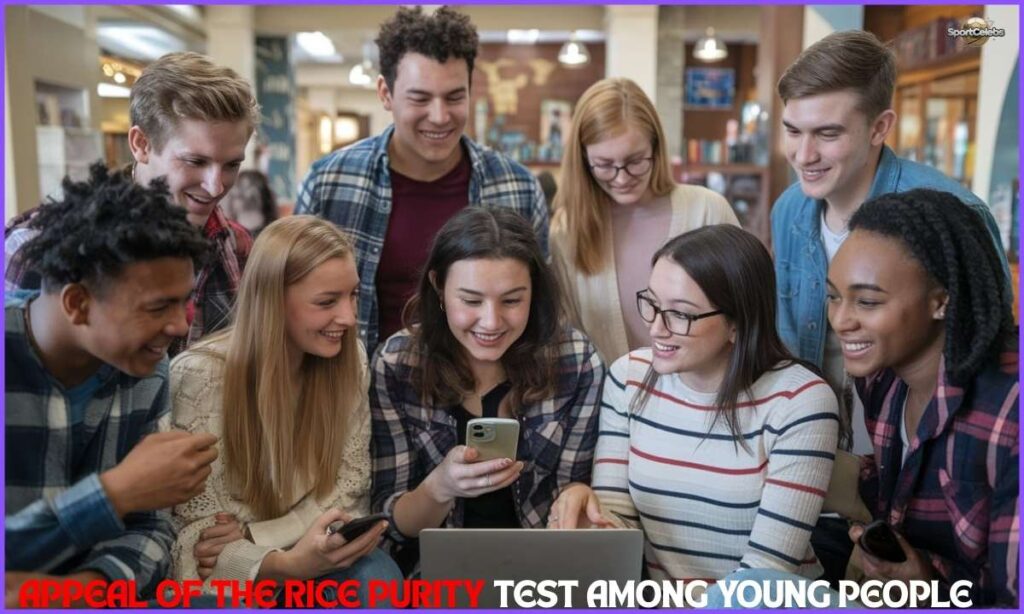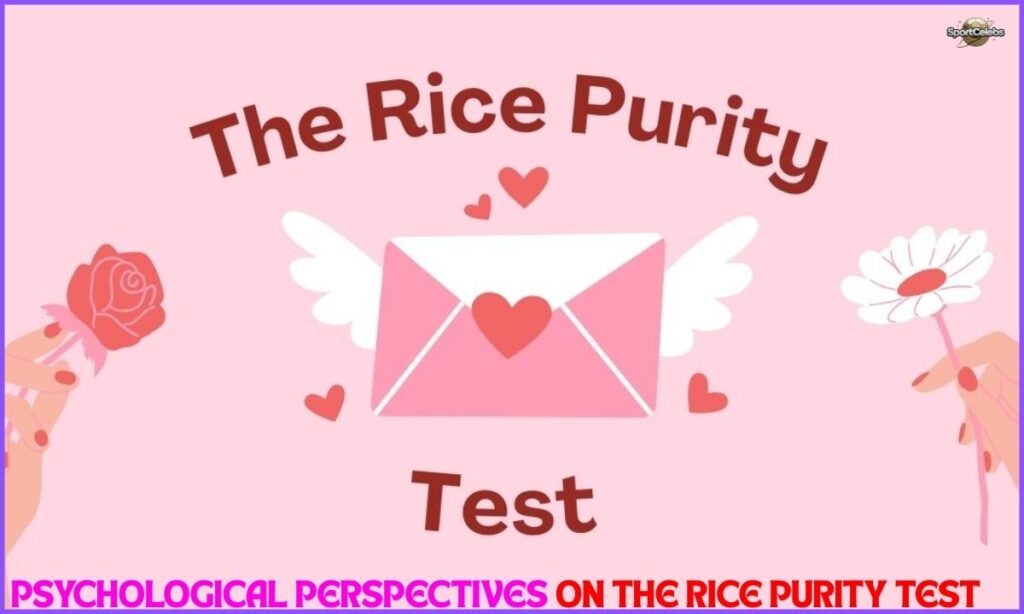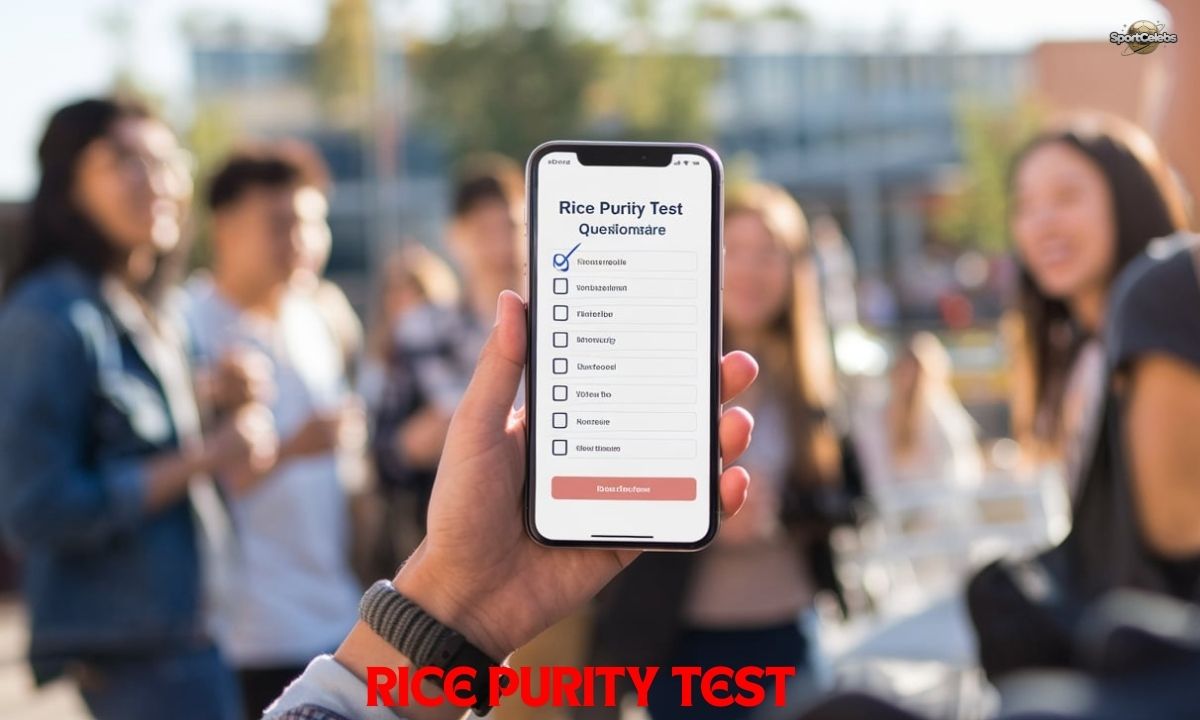The Rice Purity Test has gained widespread recognition, especially among students and young adults. Created to assess innocence levels, the quiz encourages users to reflect on their life experiences.
From its start at Rice University, it has evolved into a social phenomenon, bridging different generations. Today, the Rice Purity Test is widely shared across social media, attracting users from diverse backgrounds.
Many people take it as a fun, non-serious activity, with no major implications. This simple test provides a lighthearted way for individuals to explore their experiences and see how they compare.
Origins of the Rice Purity Test
The Rice Purity Test began as a campus tradition at Rice University in Houston, Texas. The initial purpose was to foster connections among students and encourage open, friendly discussions.
Instead of judging actions, the test was meant to spark friendly conversations and mutual understanding.
As word of the test spread, it gained popularity in other colleges nationwide. For many students, it became a rite of passage, marking a fun milestone.
Today, it has moved far beyond college campuses, reaching and engaging people worldwide through online platforms.
The Structure of the Rice Purity Test
The Rice Purity Test is a 100-question quiz covering a wide range of life experiences. Topics vary from friendships and romantic encounters to personal milestones and choices.
Participants tick off their experiences, with each checked item reducing their “purity” score. A perfect score of 100 signifies high innocence, while a score closer to 0 reflects more experience.
This straightforward format adds to its appeal, making it easy and fun. Users can quickly assess their lives, see where they stand, and share results with friends for comparison.
How to Take the Rice Purity Test
Taking the Rice Purity Test is simple and easily accessible online. Users can find the quiz on popular quiz websites or through social media links.
Each question has a checkbox format, allowing participants to select experiences that apply to them. After completing the test, a score is calculated based on the number of checked boxes.
A higher score indicates more innocence, while a lower score shows more life experiences. Participants can choose to share their results on social media or keep them private if they prefer.
The Cultural Impact of the Rice Purity Test
Over the years, the Rice Purity Test has evolved into a social media sensation. Initially a fun quiz for college students, it now attracts users worldwide from all age groups.
People often post their scores on platforms like TikTok and Twitter, adding context or humor. These social interactions create connections over shared experiences and spark discussions.
The test has become a lighthearted form of competition and a way to gain validation. Social media, reinforces certain cultural ideas and keeps evolving with new trends.
The Appeal of the Rice Purity Test Among Young People

The Rice Purity Test is especially popular with young adults and college students. Its simplicity and relatable questions make it an appealing tool for self-assessment.
Many young people see it as a playful way to explore personal growth and compare experiences. Sharing results offers a unique way to bond and find common ground with friends or strangers.
For college students, it resonates with their experiences, making it enjoyable and memorable. As a result, it has become a common part of youth culture and online communities.
Why the Rice Purity Test Remains Relevant Today
The Rice Purity Test’s ongoing popularity can be credited to its simple, accessible format and social media presence. It provides an immediate, easy-to-understand score without deep analysis.
Unlike other personality quizzes, it doesn’t require interpretation or explanations. With each generation, it adapts to new social contexts and trends. Its accessibility across various platforms ensures it remains appealing.
This timeless quality helps it bridge traditional college culture with the digital era, connecting generations of users.
Analyzing the Questions
The Rice Purity Test’s questions span a wide range of life experiences. Starting with mild actions, like hand-holding, they progress to deeper, more personal topics.
This progression allows people from different backgrounds to feel included and understood. The balance between lighter and more serious topics adds charm to the test.
Participants encounter experiences they may relate to without feeling judged. This thoughtful approach has contributed to the test’s enduring appeal among people of all ages.
The Role of Social Media in Popularizing the Test
Social media has played a crucial role in amplifying the Rice Purity Test’s popularity. Platforms like TikTok and Twitter allow users to share scores easily, sparking curiosity among others.
This sharing leads friends to join and test themselves, furthering the trend. The test’s simple, shareable nature makes it ideal for social media trends.
People often post their results as conversation starters or to compare with others. In this way, social media has helped the test stay current, recognized, and widely embraced.
The Rice Purity Test and Its Influence on College Culture
Within college communities, the Rice Purity Test has carved out a unique place. Students see it as both a fun activity and a way to explore personal boundaries.
It aligns with the self-discovery many experience during college, fostering an environment of reflection. The test offers a humorous, safe way to reflect on past choices and social experiences.
For many students, taking the test feels like a rite of passage. Its lasting association with college life has made it a staple among campus traditions.
Psychological Perspectives on the Rice Purity Test

From a psychological standpoint, the test encourages self-reflection and self-assessment. Quantifying personal experiences as a score invites participants to reflect on life choices.
It allows some to see their growth, while others may view it as a fun quiz. The varying interpretations of the score highlight its flexibility.
Some may see a high score as innocence, while others view a low score as a “well-lived” life. This subjective nature adds to the test’s appeal, allowing users to form unique personal meanings.
Criticisms and Limitations of the Rice Purity Test
Despite its popularity, the Rice Purity Test does face some criticism. Critics argue that it may reinforce stereotypes by assigning value to certain life experiences.
However, many supporters believe it is meant to be lighthearted, not a serious judgment tool. The test’s simplicity is both an advantage and a limitation.
While it encourages reflection, it may lack nuance and overlook individual differences. Nevertheless, its playful nature makes it popular, and users enjoy it as a fun, casual activity.
How the Rice Purity Test Has Evolved Over Time
The Rice Purity Test has adapted to suit changing social attitudes and values. Newer versions sometimes include questions that reflect modern experiences.
This flexibility keeps the test relevant and appealing to new generations. Some versions now mention social media or technology, aligning with contemporary life.
This evolution ensures it continues to resonate with today’s youth. As society changes, the test adapts, remaining a relevant trend in youth culture.
Taking the Rice Purity Test Online
Digital access has made the Rice Purity Test more convenient and widely available. Many websites host the quiz, allowing participants to take it privately and anonymously.
This privacy increases its appeal, especially for those who value discretion. Some platforms offer slight variations on the original quiz, featuring unique questions.
These online options maintain the original format while catering to diverse audiences. This accessibility has helped the test reach people around the world.
The Meaning Behind the Test Scores
Interpretations of Rice Purity Test scores vary widely. Generally, a higher score indicates innocence, while a lower score reflects more life experiences.
However, many see their scores as a humorous take on life rather than a serious assessment. Others use the test as a fun self-assessment tool, giving the score personal meaning.
Its subjective nature lets each person interpret their result freely. Ultimately, it’s a lighthearted exercise in reflection, open to individual understanding.
Why People Share Their Results
One intriguing aspect of the Rice Purity Test is how openly people share their scores. Many post their results on social media to connect over shared experiences and invite discussions.
It fosters a sense of community, encouraging others to join. Sharing results has become a form of self-expression for users. It allows people to find common ground and share humorous stories.
This social aspect has boosted the test’s appeal, especially among young people eager to connect.
The Future of the Rice Purity Test
Looking to the future, the Rice Purity Test will likely continue evolving. As cultural shifts occur, the test will adapt to stay relevant. Its simplicity and flexibility make it a timeless activity with enduring appeal.
New generations will continue finding personal meaning and entertainment in it. The test’s combination of fun and introspection keeps it cherished across generations. As such, it is expected to remain a tradition that fosters connections worldwide.
Read This Blog: Why is Everyone Talking About www.iamrestaurant.com Norstrat Restaurant?
Frequently Asked Questions (FAQs)
What is the Rice Purity Test?
The Rice Purity Test is a quiz designed to assess one’s life experiences, often used as a fun way to explore personal milestones and compare with friends.
How is the Rice Purity Test scored?
The test scores participants based on the number of checked experiences, with a higher score indicating more innocence and a lower score suggesting more life experiences.
Is the Rice Purity Test only for college students?
While it began as a college tradition, the test is popular with people of all ages worldwide, especially on social media.
Can I take the Rice Purity Test online?
Yes, the Rice Purity Test is widely available on various websites, allowing users to take it privately and anonymously.
Does a low score on the Rice Purity Test mean something bad?
No, the test is meant for fun and reflection, not as a judgment. Many interpret their scores in a lighthearted, personal way.
Conclusion
The Rice Purity Test has journeyed from a simple college activity to a global social media phenomenon, resonating with young and old alike.
Its straightforward structure, ease of access, and cultural impact have made it a timeless tool for self-reflection and social connection.
As it continues to evolve with new trends, the test retains its appeal, providing a fun, non-judgmental way to explore and share life experiences with others.
Read more: Discover more articles on sports, celebrities, and blogs on sportcelebs.info to stay updated on the latest stories and insights.

Ansa is a talented content writer and digital marketer with expertise in SEO, social media management, and online marketing. She excels at creating impactful, data-driven content to help businesses connect with their target audience and achieve measurable outcomes.







